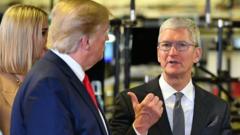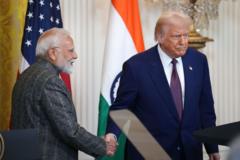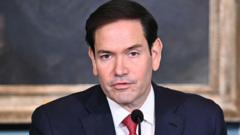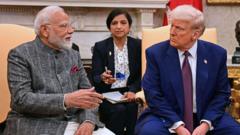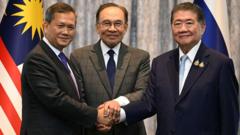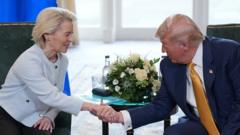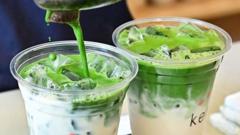With a 15% import tax on South Korean goods now in effect, the K-beauty industry is adapting to changes as American consumers brace for potential price hikes. While demand for these innovative skincare products remains strong, the rising costs could influence purchasing habits.
K-Beauty in Crisis: Trump Tariffs Threaten South Korean Cosmetics Industry

K-Beauty in Crisis: Trump Tariffs Threaten South Korean Cosmetics Industry
The South Korean cosmetics industry faces challenges as new tariffs impact the popular K-beauty market in the U.S., prompting concerns among consumers and businesses alike.
The bond between South Korea’s K-beauty sector and American consumers is growing stronger, but recent changes in trade policies threaten this delicate connection. K-beauty products, renowned for their quality and value, saw U.S. sales reach approximately $1.7 billion (£1.3 billion) in 2024—a staggering increase of over 50% from the prior year. This surge in popularity is fueled not only by the unique ingredients found in these products but also by the global allure of South Korean culture.
However, the Trump administration's implementation of a 15% import tax on South Korean goods could disrupt this momentum. Although the levy is lower than the previously threatened 25%, it has prompted consumer caution. Pearl Mak, a graphic designer from the U.S., reveals that she now exclusively uses K-beauty products due to their effectiveness on her skin compared to Western alternatives. Despite the potential for increased prices, Mak expresses a willingness to adjust her budget to continue purchasing her favorite brands.
Retailers in the K-beauty space, such as Santé Brand and Senti Senti, have proactively responded to tariff announcements by ramping up inventory. Customers, anticipating price hikes, have begun to strategically stock up on their preferred products. Cheyenne Ware, founder of Santé Brand, notes that consumers are preparing for unpredictability, leading to a 30% spike in orders right after tariff news broke.
As the U.S. market steers towards higher costs, industry experts warn that smaller K-beauty brands with thinner profit margins will face significant pressure to raise prices. Conversely, larger corporations may weather the storm better, potentially maintaining stable prices for their loyal customer base. Despite the fluctuations, the enduring appeal of K-beauty suggests that dedicated consumers will continue to seek out these products, though they may opt for fewer items.
The recent trade agreements struck by President Trump with Japan and the European Union mean that the competitive landscape for cosmetics will remain challenging for K-beauty brands. While there is an ambition to bolster the production of American-made goods, many consumers, including Mak, remain unsatisfied with domestic alternatives. She reports finding no U.S. brands that measure up to the quality of her beloved K-beauty products.
With the K-beauty industry navigating uncertain trade waters, its commitment to innovation and quality will be tested, yet its devoted following appears poised to withstand the rising costs for now.

